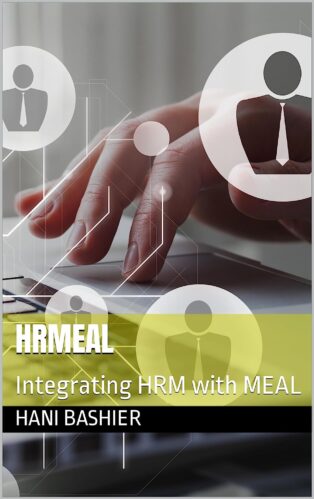Developing a Comprehensive MEAL Plan: A Step-by-Step Guide
Monitoring, Evaluation, Accountability, and Learning (MEAL) is a critical component of project and program management in the development and humanitarian sectors. A comprehensive MEAL plan provides a framework for assessing and demonstrating the effectiveness, efficiency, relevance, and sustainability of interventions, as well as fostering a culture of learning and continuous improvement. This guide will walk you through the process of developing a MEAL plan, including:
- Understanding the purpose and components of a MEAL plan
- Conducting a situational analysis and stakeholder mapping
- Developing a results framework and indicators
- Designing monitoring and evaluation methodologies
- Integrating accountability and learning into the MEAL plan
- Planning for data management and reporting
- Implementing and adapting the MEAL plan
1. Understanding the Purpose and Components of a MEAL Plan
A MEAL plan serves several key purposes, including:
- Guiding the systematic collection, analysis, and use of data to inform decision-making and improve program performance
- Providing a framework for assessing and demonstrating the impact, outcomes, and outputs of interventions
- Ensuring that programs are accountable to beneficiaries, stakeholders, and donors
- Facilitating learning and knowledge management within the organization and among partners
A comprehensive MEAL plan typically includes the following components:
- Situational analysis and stakeholder mapping
- Results framework and indicators
- Monitoring and evaluation methodologies
- Accountability and learning strategies
- Data management and reporting plan
- Implementation, budget, and timeline
2. Conducting a Situational Analysis and Stakeholder Mapping
A situational analysis is an essential first step in developing a MEAL plan. This process involves gathering and analyzing information about the program context, needs, and priorities, as well as the capacities, interests, and roles of various stakeholders. Key steps in conducting a situational analysis may include:
- Reviewing existing data and documentation, such as assessments, evaluations, reports, and studies
- Consulting with stakeholders, including beneficiaries, partners, staff, and donors, through interviews, focus groups, or workshops
- Observing and documenting program activities, processes, and outcomes, as well as the broader context and trends
Based on the situational analysis, a stakeholder mapping exercise can be conducted to identify and prioritize the key stakeholders in the program, as well as their roles, responsibilities, and relationships. This mapping process will help to inform the design and implementation of the MEAL plan, ensuring that it is responsive, inclusive, and participatory.
3. Developing a Results Framework and Indicators
A results framework is a visual representation of the program’s theory of change, which outlines the pathways and causal links between interventions, outputs, outcomes, and impacts. The results framework serves as the foundation for the MEAL plan, providing a clear structure for monitoring, evaluation, accountability, and learning activities.
To develop a results framework, the following steps can be followed:
- Identify the program’s long-term impact: What is the ultimate goal or change that the program aims to achieve?
- Define the program’s outcomes: What specific changes or results are expected to contribute to the impact?
- Specify the program’s outputs: What tangible products, services, or activities are required to achieve the outcomes?
- Map the causal links and assumptions: How do the outputs, outcomes, and impact relate to one another, and what assumptions underlie these relationships?
Once the results framework has been developed, a set of indicators can be defined for each level of the framework (outputs, outcomes, and impact). Indicators should be specific, measurable, achievable, relevant, and time-bound (SMART) and should be selected based on their relevance to the program’s objectives, the availability of data, and the feasibility of measurement.
4. Designing Monitoring and Evaluation Methodologies
Monitoring and evaluation (M&E) methodologies are the tools and approaches used to collect, analyze, and interpret data on program performance and impact. The choice of M&E methodologies should be guided by the program’s results framework, indicators, and situational analysis, as well as the capacities, resources, and requirements of the organization and its stakeholders.
Some common M&E methodologies include:
- Surveys and questionnaires
- Interviews and focus groups
- Observations and site visits
- Document reviews and content analysis
- Case studies and storytelling
- Participatory methods, such as community scorecards or participatory rural appraisal
A well-designed MEAL plan should include a mix of quantitative and qualitative methods, as well as a combination of routine monitoring (e.g., ongoing data collection and analysis) and periodic evaluation (e.g., mid-term or end-of-project assessments). Additionally, the MEAL plan should specify the timing, frequency, and responsibilities for data collection, analysis, and reporting, as well as any capacity-building or training activities required to support these tasks.
5. Integrating Accountability and Learning into the MEAL Plan
Accountabilityand learning are essential components of a comprehensive MEAL plan that ensure programs are responsive, transparent, and adaptive. Accountability refers to the process of being held responsible for one’s actions, decisions, and results, while learning involves the generation, capture, and application of knowledge to improve performance and inform decision-making.
To integrate accountability and learning into the MEAL plan, consider the following strategies:
- Establish clear lines of responsibility and reporting relationships for MEAL activities, including roles and responsibilities of staff, partners, and stakeholders
- Develop and implement feedback and complaints mechanisms that allow beneficiaries, stakeholders, and staff to raise concerns, provide input, and hold the program accountable
- Foster a culture of openness, collaboration, and critical reflection, encouraging staff and partners to share challenges, successes, and lessons learned, both internally and externally
- Conduct regular learning and review sessions to discuss MEAL findings, identify trends and patterns, and explore implications for program strategy and implementation
- Document and disseminate lessons learned, best practices, and case studies, both within the organization and among partners, stakeholders, and the broader sector
6. Planning for Data Management and Reporting
Effective data management and reporting are critical to the success of a MEAL plan, ensuring that data is accurate, accessible, and actionable. Key aspects of data management and reporting include:
- Data collection: Establishing protocols and tools for gathering data, such as surveys, interviews, or observation checklists, as well as training and support for data collectors
- Data storage: Developing secure and systematic processes for storing and organizing data, including electronic databases, file systems, or cloud-based platforms
- Data quality: Implementing data quality assurance measures, such as data validation, cross-checking, and triangulation, to ensure that data is reliable, credible, and consistent
- Data analysis: Utilizing appropriate statistical or qualitative analysis techniques to identify trends, patterns, and relationships in the data, as well as software and tools to support this analysis
- Data visualization: Creating clear and compelling visual representations of data, such as graphs, charts, or infographics, to facilitate understanding and communication of results
- Data reporting: Preparing regular reports, briefs, or presentations that summarize MEAL findings, conclusions, and recommendations, tailored to the needs and expectations of different audiences (e.g., beneficiaries, stakeholders, donors)
7. Implementing and Adapting the MEAL Plan
Implementing a MEAL plan involves putting the plan into action, monitoring progress, and adapting the plan as needed based on emerging evidence, changing circumstances, or new opportunities. Key steps in implementing and adapting a MEAL plan include:
- Developing an implementation plan that outlines the timeline, activities, and resources required to execute the MEAL plan, as well as the roles and responsibilities of staff, partners, and stakeholders
- Allocating sufficient budget and resources to support the MEAL plan, including staff time, equipment, travel, and capacity-building activities
- Establishing communication and coordination mechanisms to facilitate information sharing, collaboration, and learning among the MEAL team, program staff, and partners
- Monitoring and reviewing the progress and effectiveness of the MEAL plan, using data and feedback to identify strengths, weaknesses, and areas for improvement
- Adapting the MEAL plan, as needed, to respond to new information, challenges, or opportunities, ensuring that the plan remains relevant, realistic, and aligned with program objectives and priorities
In conclusion, developing a comprehensive MEAL plan is a vital process that enables organizations to effectively monitor, evaluate, learn from, and improve their programs. By following the steps outlined in this guide, organizations can create a robust MEAL plan that supports evidence-based decision-making, accountability, transparency, and continuous improvement, ultimately contributing to the achievement of meaningful and lasting impact.







